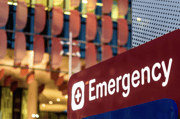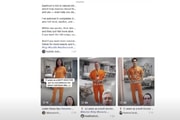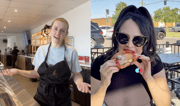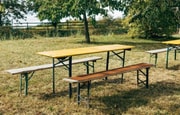SDC Rewards Member
Upgrade yours now
BEWARE: Fake bank notes circulating at an alarming rate, leaving many on edge – can you spot the difference?
Be careful, members! There has been an alarming increase in the circulation of counterfeit banknotes in the capital cities of Australia.
Money launderers and criminals have been spreading fake $100 bills by using them to buy high-value items from sellers on online marketplaces. Unsuspecting victims then pass the notes on to other people.
Authorities say that more and more fakers are posing as people who want to buy things like bikes and laptops, then giving the sellers fake money.
A recent survey by the Reserve Bank of Australia (RBA) found that Aussies aren't likely to check their bank notes for mistakes because they are sure that fake bills will be taken out of circulation and they don't expect to get a fake bill.
According to the RBA, Sydney and Melbourne are the cities where fake currency is most frequently found. But just last month, police in the Northern Territory discovered that fake $100 bills had also made it there.
Late last year, the Daily Telegraph reported that South Australian Police had also issued a warning after a number of Adelaide businesses had been the target of fake $50 and $100 bills.
In Australia's capital cities, counterfeit banknotes are increasing. Credit: RBA.
How can you tell if a banknote is genuine or counterfeit? The RBA advises always checking a variety of features and not relying on just one or two.
It can be helpful to compare a suspicious banknote to one you know is real and look for the differences. Although their placement on the banknote can differ, all Australian banknotes have similar security features.
Is it plastic?
The Australian currency has a distinctive feel and is printed on plastic. A questionable banknote might feel disproportionately thick or thin in comparison to an authentic one.
It is also difficult to start a tear along the edge of a real banknote. Additionally, you can try scrunching the banknote you have in your hand; a genuine banknote ought to spring back into its original shape.
Look for the Coat of Arms
When you hold the banknote up to the light, you should see the Australian Coat of Arms.
Look for the star
On both sides of the banknote are circles with diamond-shaped patterns printed inside of them. The patterns on the banknote should perfectly align to form a seven-pointed star when you hold it up to the light.
Check the clear window
The clear window should be built into the banknote, not added on as an extra. Make sure that it is impossible to rub off the white image printed on the window.
Look for the embossing as well; the $10 banknote has a wave pattern in the window, and the $20, $50, and $100 banknotes have the value embossed in the windows.
Here are some additional security features to look for if you think a banknote might be a fake:
Feel the dark printing
The dark printing is made with a special raised ink that can be felt with your finger.
Check the print quality
The printing on the background must be clear. Look for irregularities like less distinct patterns, thicker or thinner lines, or variations in colour.
Look for the microprinting
You can make out tiny, distinct words in the upper left corner of the $5 banknote and close to the portraits on the other banknotes with a magnifying glass.
Look at the banknote under UV light
The vast majority of banknotes shouldn't glow. The only exceptions are the serial numbers, a patch on the $5 bill, and a patch that shows the value on the $20, $50, and $100 bills.
There are a number of ways to tell a fake note from a real one. Credit: RBA.
If you come across a fake note, what should you do?
It is a criminal offence to be in possession of counterfeit banknotes while knowing that they are fake. Suspect banknotes should be turned over to local or federal law enforcement.
It's important to know that counterfeits have no value, so you won't get your money back. If they turn out to be real banknotes, you'll get paid in full.
If you come across a banknote that you suspect is counterfeit:
- Handle the suspect banknote as little as possible and store it in an envelope.
- Note any relevant information, such as how it came into your possession.
- Report the matter immediately to State or Federal police.
For more information, you can call an RBA representative at 02 9551 9830 or send an email at [email protected].
We hope these tips will be helpful to you, members!





